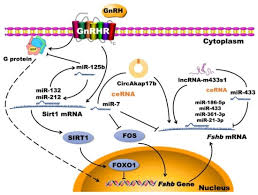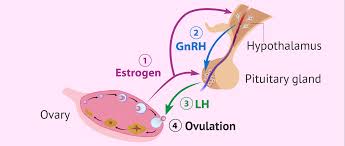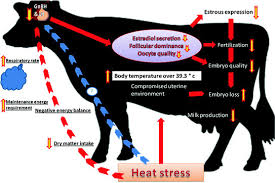Gonadotropin-Releasing Hormone (GnRH)
GnRH is secreted by the hypothalamus and stimulates the anterior pituitary gland to release luteinizing hormone (LH) and follicle-stimulating hormone (FSH). These two hormones play a critical role in the development and function of the ovaries and testes.
Luteinizing Hormone (LH)
LH triggers ovulation and the development of the corpus luteum in females, while in males, it stimulates the production of testosterone by acting on the Leydig cells in the testes.
Read Also: How to Grow, Use and Care for Whitetinge Sedge Grass (Carex albicans)
Follicle-Stimulating Hormone (FSH)

FSH promotes the growth and maturation of ovarian follicles in females and supports sperm production in males by acting on the Sertoli cells in the seminiferous tubules.
Estrogen
Produced by growing ovarian follicles, estrogen is responsible for the development of secondary sexual characteristics, regulation of the estrous cycle, and preparation of the uterus for pregnancy.
Progesterone
Secreted by the corpus luteum, progesterone maintains pregnancy by supporting the uterine lining and inhibiting contractions of the uterus.
Prostaglandin F2-alpha (PGF2α)
PGF2α is secreted by the uterus and plays a vital role in regressing the corpus luteum, allowing the animal to return to estrus if pregnancy has not occurred.
Oxytocin
Produced by the hypothalamus and released by the posterior pituitary, oxytocin stimulates uterine contractions during labor and the ejection of milk during lactation.
Hormonal Disorders Affecting Reproduction
1. Anestrus: This condition is marked by the absence of estrus (heat) in animals and can be caused by hormonal imbalance, poor nutrition, or stress.
2. Cystic Ovarian Disease: Occurs when follicles fail to ovulate and form cysts, leading to prolonged estrus or anestrus. It is commonly due to failure in the LH surge.
3. Hypogonadism: Characterized by reduced function of the gonads (testes or ovaries), resulting in decreased hormone production and impaired fertility.
4. Silent Heat: In this condition, the animal ovulates without showing visible signs of estrus. It is often caused by low estrogen levels or insufficient progesterone priming.
Read Also: How to Grow, Use and Care for Whitegrass (Leersia virginica)
Hormonal Control in Artificial Insemination (AI)

Artificial insemination requires precise control of the reproductive cycle using hormonal protocols. These hormones help in synchronizing estrus, inducing ovulation, and improving conception rates.
1. Estrus Synchronization: Prostaglandins like PGF2α are used to regress the corpus luteum, allowing animals to come into heat simultaneously for efficient breeding.
2. Ovulation Induction: GnRH or LH analogs are administered to trigger ovulation at a predictable time, facilitating timed AI procedures.
3. Progesterone Therapy: Involves the use of progesterone-releasing devices such as CIDRs (Controlled Internal Drug Release) to regulate the estrous cycle and enhance fertility in repeat breeders.
Do you have any questions, suggestions, or contributions? If so, please feel free to use the comment box below to share your thoughts. We also encourage you to kindly share this information with others who might benefit from it. Since we can’t reach everyone at once, we truly appreciate your help in spreading the word. Thank you so much for your support and for sharing!

